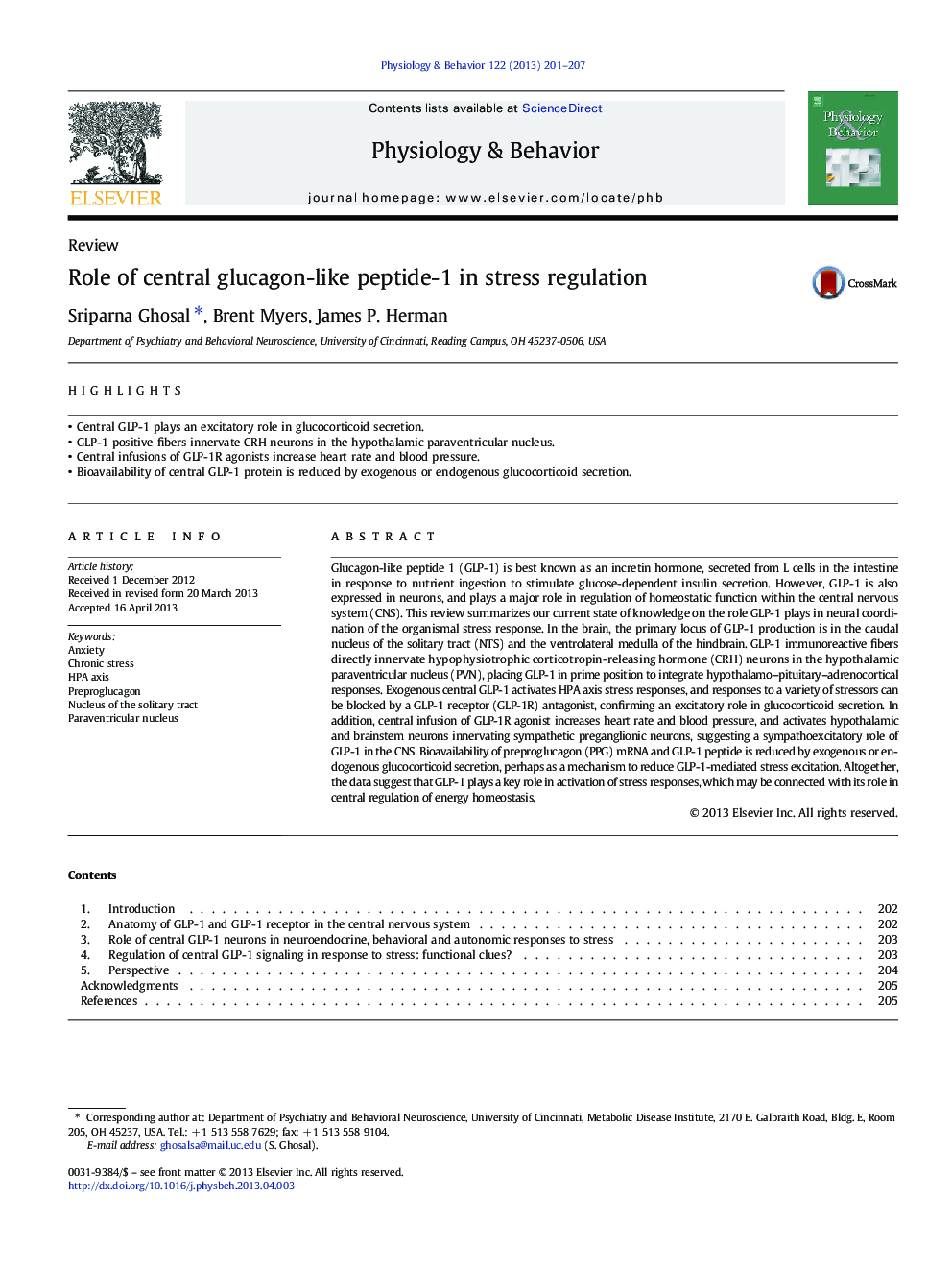| کد مقاله | کد نشریه | سال انتشار | مقاله انگلیسی | نسخه تمام متن |
|---|---|---|---|---|
| 5924389 | 1571195 | 2013 | 7 صفحه PDF | دانلود رایگان |
- Central GLP-1 plays an excitatory role in glucocorticoid secretion.
- GLP-1 positive fibers innervate CRH neurons in the hypothalamic paraventricular nucleus.
- Central infusions of GLP-1R agonists increase heart rate and blood pressure.
- Bioavailability of central GLP-1 protein is reduced by exogenous or endogenous glucocorticoid secretion.
Glucagon-like peptide 1 (GLP-1) is best known as an incretin hormone, secreted from L cells in the intestine in response to nutrient ingestion to stimulate glucose-dependent insulin secretion. However, GLP-1 is also expressed in neurons, and plays a major role in regulation of homeostatic function within the central nervous system (CNS). This review summarizes our current state of knowledge on the role GLP-1 plays in neural coordination of the organismal stress response. In the brain, the primary locus of GLP-1 production is in the caudal nucleus of the solitary tract (NTS) and the ventrolateral medulla of the hindbrain. GLP-1 immunoreactive fibers directly innervate hypophysiotrophic corticotropin-releasing hormone (CRH) neurons in the hypothalamic paraventricular nucleus (PVN), placing GLP-1 in prime position to integrate hypothalamo-pituitary-adrenocortical responses. Exogenous central GLP-1 activates HPA axis stress responses, and responses to a variety of stressors can be blocked by a GLP-1 receptor (GLP-1R) antagonist, confirming an excitatory role in glucocorticoid secretion. In addition, central infusion of GLP-1R agonist increases heart rate and blood pressure, and activates hypothalamic and brainstem neurons innervating sympathetic preganglionic neurons, suggesting a sympathoexcitatory role of GLP-1 in the CNS. Bioavailability of preproglucagon (PPG) mRNA and GLP-1 peptide is reduced by exogenous or endogenous glucocorticoid secretion, perhaps as a mechanism to reduce GLP-1-mediated stress excitation. Altogether, the data suggest that GLP-1 plays a key role in activation of stress responses, which may be connected with its role in central regulation of energy homeostasis.
Journal: Physiology & Behavior - Volume 122, 2 October 2013, Pages 201-207
